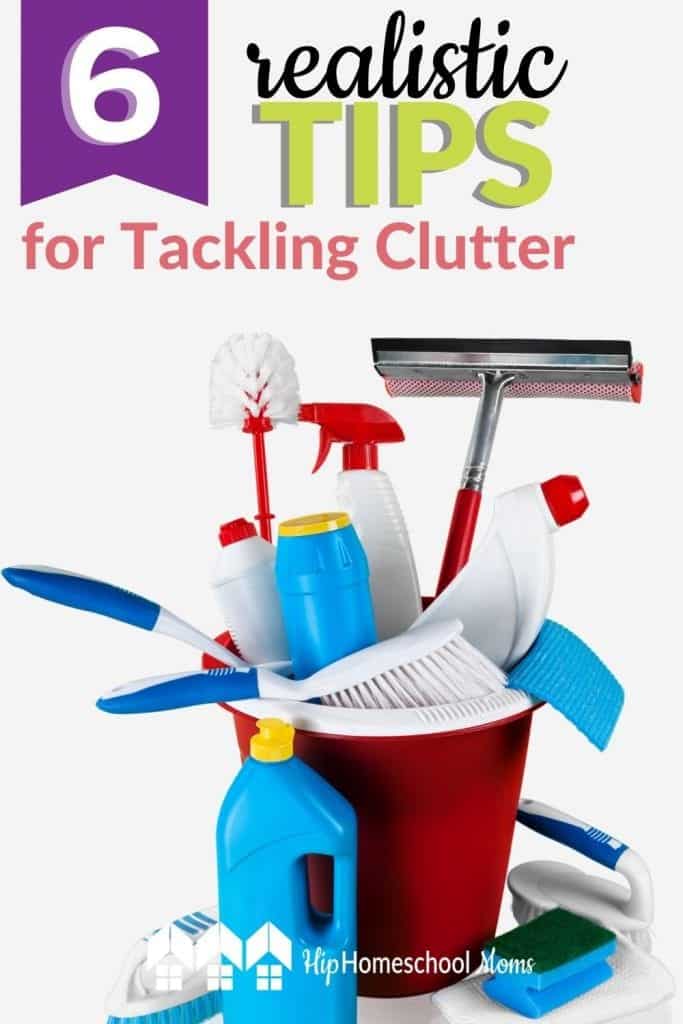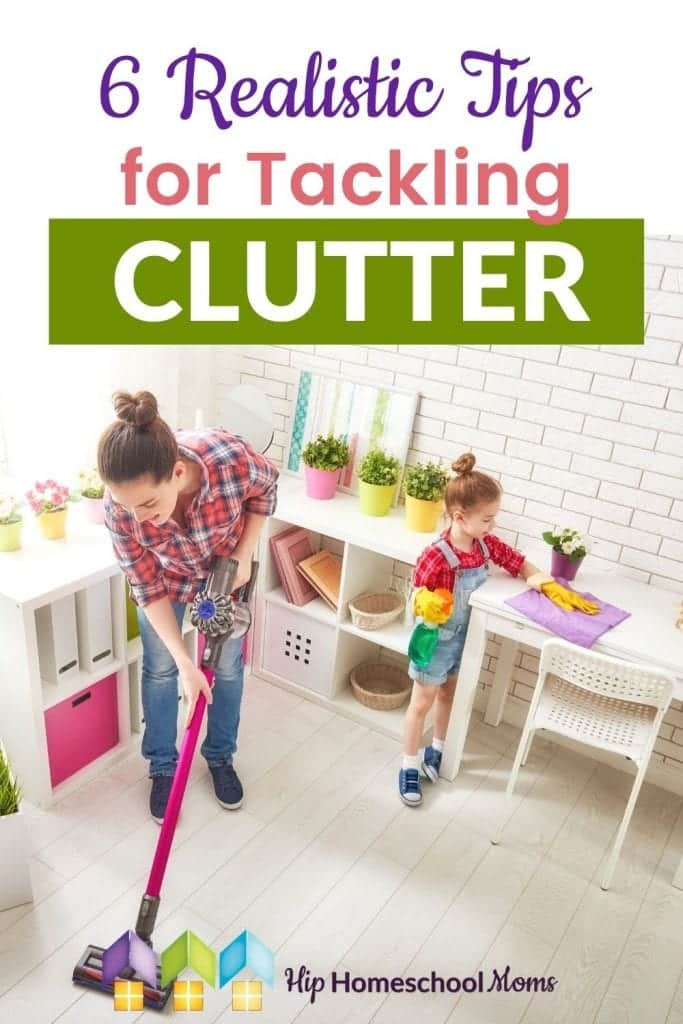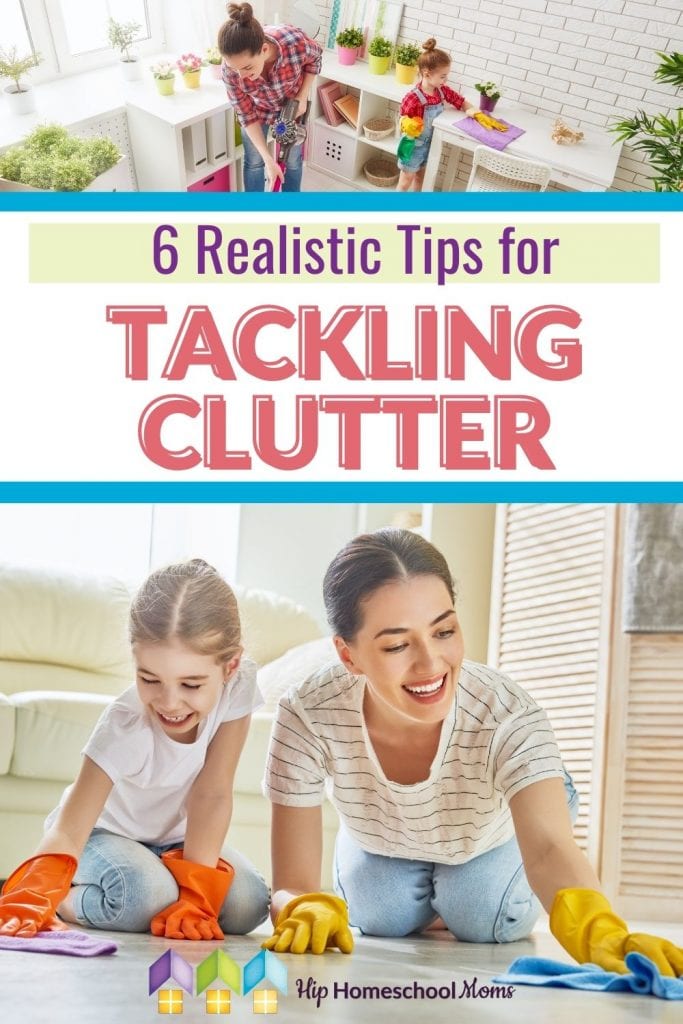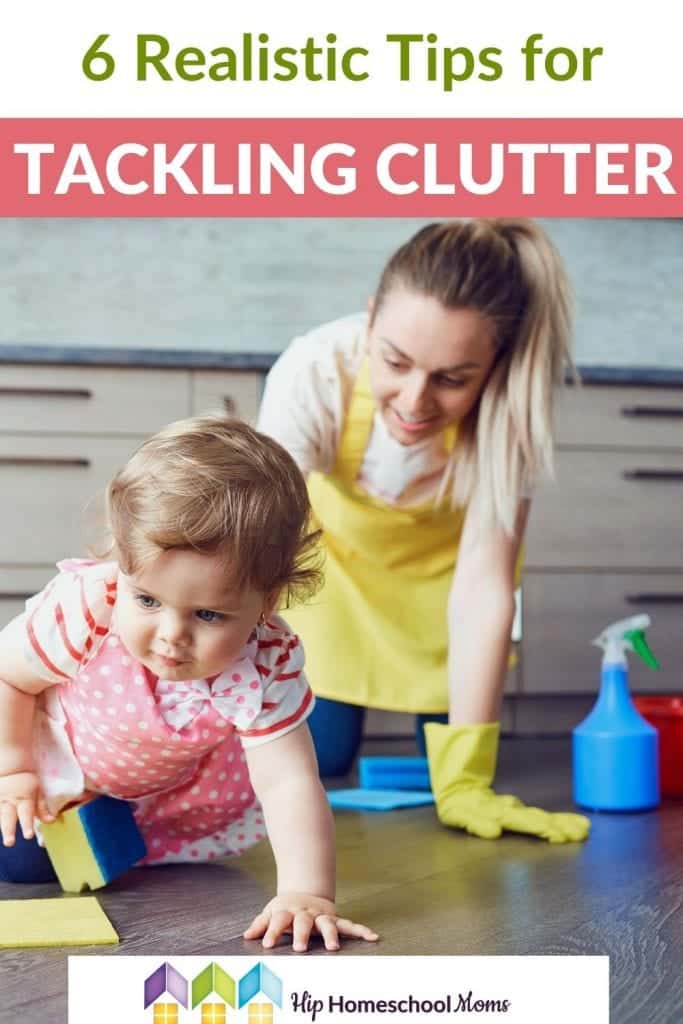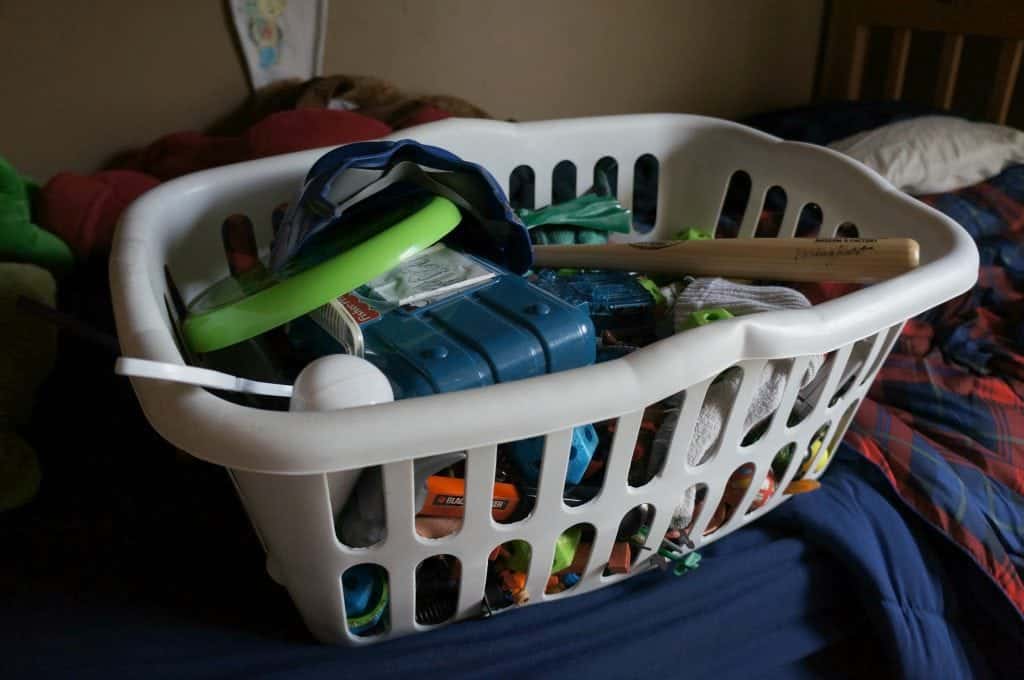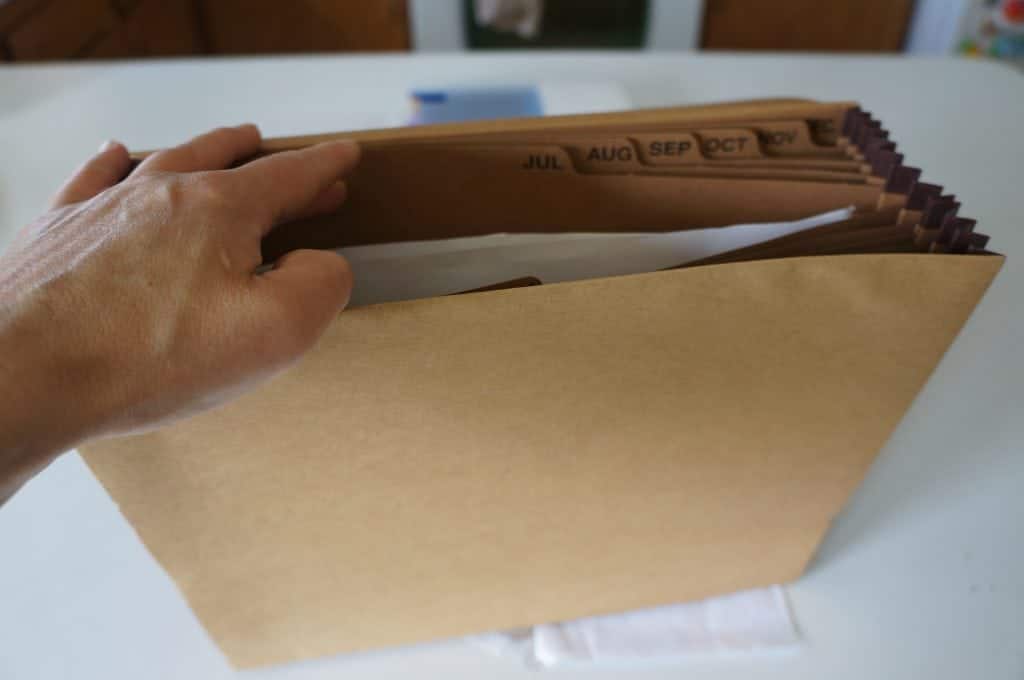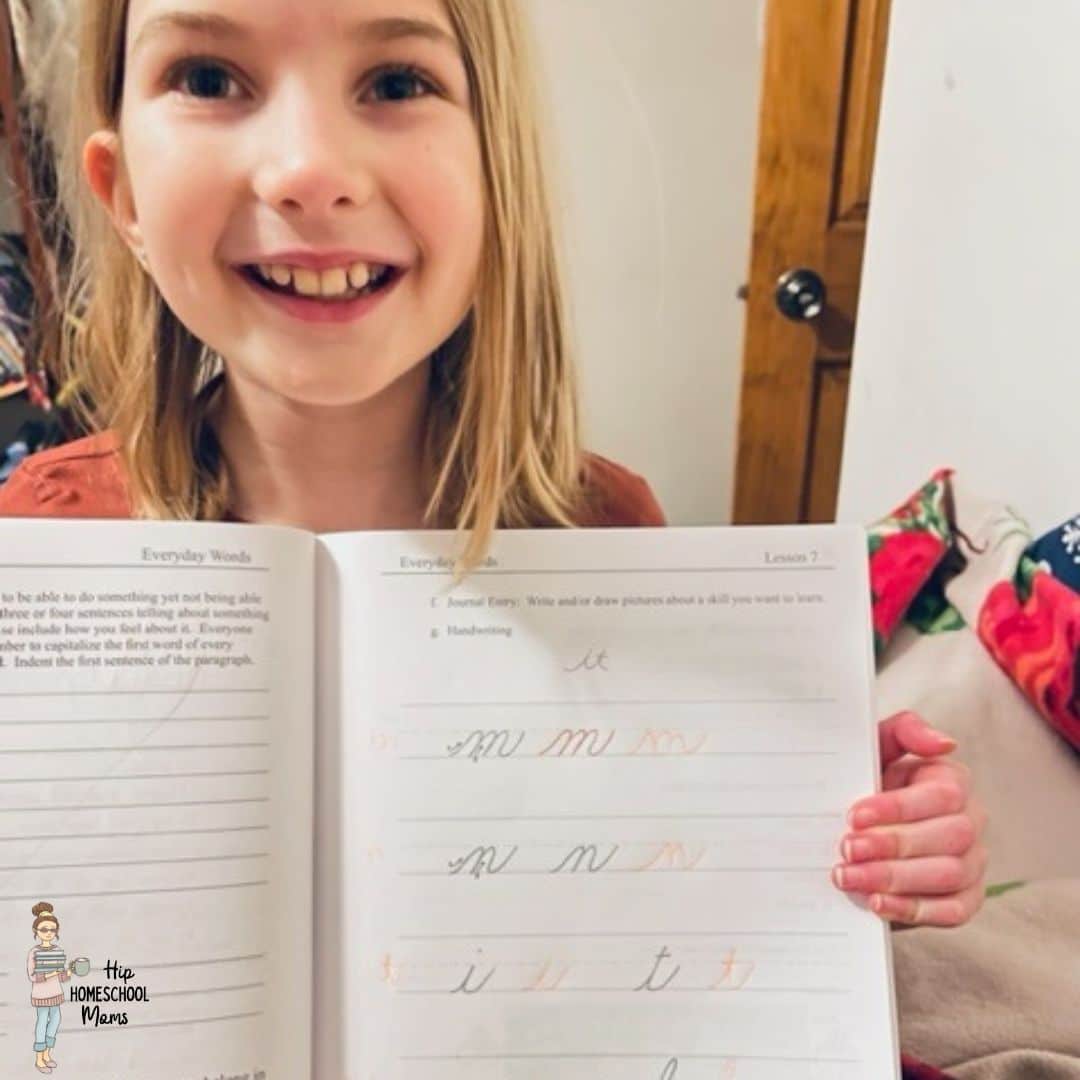6 Realistic Tips for Tackling Clutter
6 Realistic Tips for Tackling Clutter
Do you struggle with clutter? I’m willing to bet that most of us with kids and pets don’t have a home that looks like a magazine shoot all the time, even if we try to keep it clean. After all, clean and tidy aren’t always the same thing. Sometimes I feel like clutter must breed at my house, as if every family member carries clutter-spores on our skin that cause clothes to drop off all over the house and replicate while we’re sleeping. Yikes. I’ve also found that clutter stresses me out and takes up space in my mind just like it does in my home, distracting me from things that should be more worthy of my time and attention.

Therefore, I’ve embarked on a major mission to find an effective way to de-clutter, and I want share a few of the tricks I’ve discovered with you all. Now, as much as I wish I could tell you that there was some magical de-cluttering wand or de-cluttering spray that would cure the problem once and for all, I haven’t found that to be true (yet). I think clutter will always be an ongoing battle. However, I have found some simple, effective, and sane tips for keeping the clutter at bay when practiced on a regular basis. Here are 6 realistic tips for tackling clutter!
1. Start small.
If you have major clutter issues, trying to solve the whole crisis in one day just isn’t going to work. Instead, try approaching it slowly but consistently. You don’t want to get overwhelmed and give up. That clutter didn’t all get there in one day, and it’s going to take awhile to address, too.
There are a lot of ways to change the way you can adjust your expectations for what needs to be done each time you de-clutter. For example, instead of the tackling the whole kitchen, choose to sort out the junk drawer. Or clear (and decide to keep clear) that counter top that attracts junk mail. Instead of going through all of your clothes, maybe just go through the shoes first. Instead of spending one day trying to do everything, try investing 10 to 15 minutes (or even an hour) every day on de-cluttering. You get the idea. If you’re interested, I also have a little Trick of 13 for de-cluttering by tossing, storing, or filing just 13 things at each sitting. Dealing with clutter in small chunks – on a regular basis- is far more manageable and more likely to be successful in the long-term that trying to do it all in one day.
2. Start with what’s visible.
I’ve been doing this de-cluttering thing long enough to know how it works: You may sit down to clear clutter from the top of your desk, then before you know it, you’re going through desk drawers and finding billing statements and insurance policy information and old birthday cards. Oh, and look! It’s your grandmother’s wedding album…
No, no, no! Focus on the visible clutter first. Only when all surface clutter has been contained should you begin worrying about sorting and organizing things that are hidden away. As you go through the draws and nooks, continue to keep the visible clutter cleared away, too. That way, you can get to a good stopping place that fits your schedule instead of getting yourself into a mess so big it’s going to take the rest of the day to clear away (been there, done that). It’s all about keeping things doable, remember? Yes, those nooks and crannies need de-cluttering, too, but try to do it without re-cluttering-up your visible spaces.
3. Learn to let stuff go!
Let’s be honest: Most of the time our clutter could be cut in half if we could bring ourselves to throw more things away (or donate them). Keeping stuff out of obligation, guilt, or mere neglect is a sure-fire way to find ourselves buried in clutter.
So here are the major clutter culprits that need to be dealt with in a brutal, no-nonsense manner:
- Things you don’t love, need, or actually use. Whatever it is, if it doesn’t fit in at least one of these categories, you need to get rid of it, no matter who gave it to you, how much you paid for it, or how useful you think it might be someday. That said, it’s perfectly okay to keep something that isn’t useful just because you love it. And it’s just as okay to keep something you don’t really like but that is useful to you. Just don’t clutter your life with things you don’t like, don’t need, and don’t use.
- Broken things. I have a terrible tendency to set broken items on a counter top or dresser or bookshelf with the intention of fixing it, only to have it collect dust and get in my way for the next six months (or longer) until I finally decide it’s not worth fixing and throw it away. Don’t do that. If something is genuinely worth fixing, immediately set a time and place to make the repairs. If it’s not or you can’t, then throw it away!
- Things you can’t identify. Am I the only one who comes across UHOs regularly? You know, Unidentified Household Objects that look like they might have come off of some appliance, gadget, or toy. Sometimes I insist upon keeping these things for fear they might be important. Listen: if hubby and kids can’t identify it and everything seems to be working fine without it, you probably don’t need it.
- Children’s artwork. This one is tough for me. Honestly, sometimes I feel like I’m sinning when I throw away my children’s handiwork. But we have to be realistic, Moms. There is just no way to keep each and every precious creation. Absolutely save your favorites, but take photos of the rest and throw them away. (And, incidentally, I’ve searched the Bible on this subject and cannot find a single scripture regarding the sanctity of crayon drawings, finger paintings, or paper mache projects of any kind. Artwork-purging is not a sin. What a relief, huh?) I know that this is a difficult area for many of us though (especially if caught in the act of throwing away a precious masterpiece!). If you struggle with this aspect of clutter, definitely check out this post on what to do with your child’s artwork.
4. Make organization easier for yourself.
If clutter isn’t going in the trash, then it needs a new home. When you have places to contain all your random clutter, it suddenly becomes much easier to sort it all. The old adage, “A place for everything and everything in its place,” can only happen when there really is a place for everything!
Sometimes this does require an investment, but while you may not be able to afford the gorgeous storage baskets from your favorite home décor store, you probably can afford some bins and baskets from your local dollar store. While they might not be as eye-pleasing, they’re likely to work just as well, helping you conquer your clutter without the high price tag. For paper clutter, accordion files are probably my favorite solution. And plain old pocket folders, purchased around back-to-school time for $ .10 a piece, help contain tax receipts, important documents, and of course schoolwork. Create a place for everything, and it will be much easier for everything to find its way there.
5. Figure out a plan for other people’s clutter.
Let’s be honest: the clutter in your house is probably not all yours. There are probably several different people in your household who are active clutter contributors. Therefore, part of de-cluttering involves deciding what you are going to do with other people’s stuff. I’ll be honest, I have gone through stages of thought on this one. Part of me hates to make decisions for other people, but part of me knows that- if I don’t do it- it won’t happen. I don’t think there’s any one plan that works best for anyone when it comes to this decision. However, there are some things you’ll probably need to decide before you embark on your de-cluttering mission. Things like:
- If you’re married, will you and your spouse be able to follow through on a de-cluttering plan together?
- Will your significant other care if you get rid of something of his (even if you think it’s trash)?
- Are your kids able to let go of things that they don’t love/use/need on their own? Or are they inclined to hoard?
- If you quietly dispose of things yourself, will your family notice the missing items or appreciate the tidiness more?
- Is it more important to you that each family member work together on de-cluttering or that the house be universally de-cluttered?
Ultimately, this one all comes down to your household dynamics, what your de-cluttering expectations are (The house will likely retain more clutter if you leave toy decluttering up to your children.) and how important it is to you to involve others in the process. There are pros and cons to each decision, but ultimately you need to decide what’s going to bring your home the most peace. The universal key here is to have a plan going in.
6. Find a time that works for you.
As I said, de-cluttering isn’t really a once-and-for-all task as much as an ongoing one, so you’ve got to figure out where you’ll work it into a regular schedule that fits your lifestyle. For example, some people like to break up weekly housekeeping into one major cleaning task per day. If that sounds like you, you could choose one day a week to spend an hour or so de-cluttering. Or, you could decide to take 10-15 minutes each day to tackle a small area. You also need to factor in what time of day might work best. For example, if you have decided that you are going to be the one making choices about your kids’ toys, you might want to do it in the evening after they are asleep. Whatever routine you decide on, set yourself a reminder on your phone, calendar, or app that will keep you consistent. As with most things, de-cluttering is all about consistency.
…………………………………..
I’m sorry I couldn’t offer you an organization wand or a clutter spray. I’m still waiting on one of those to be invented. What I did offer was a few realistic, common-sense rules to keep in mind when tackling clutter. One of them might just be exactly what you need to conquer the clutter beast in your home!
So what methods do you use to tackle clutter at your house? Can you add any suggestions to those listed here?


